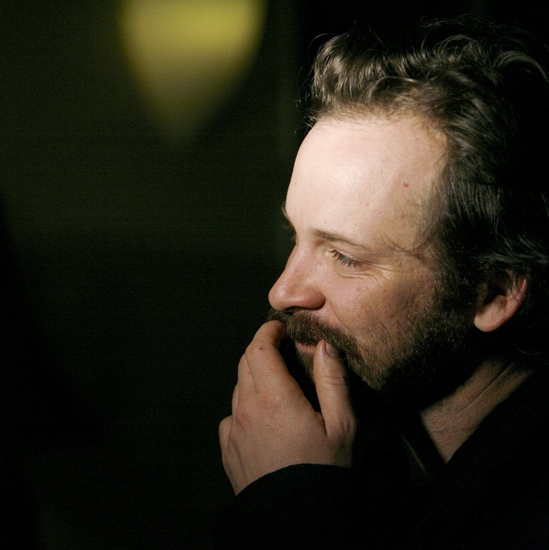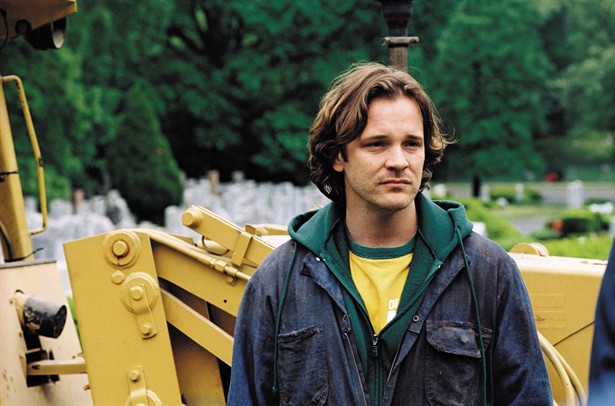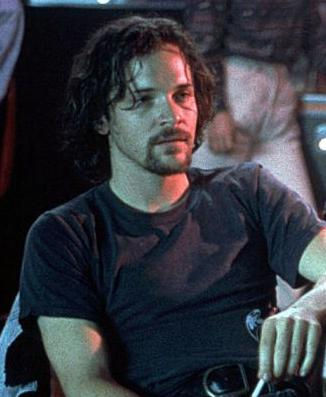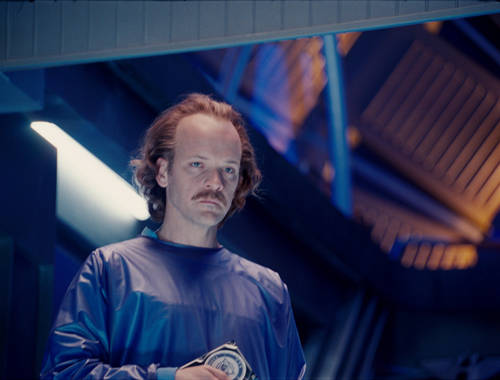Craig here with Take Three. This week: Peter Sarsgaard

Take One: Garden State (2004)
Including Garden State as a Take Three take meant two things: watching one of Sarsgaard’s very best supporting performances again and watching the actual film again. The charm of the former outweighed the task of the latter. Despite essentially disliking the film, Sarsgaard makes it worth seeing. You get no sad, woe-is-me moping from him, nor do you get “original” moments of screechy-unique arm waving. His character, Mark, a grave digger, comes from the ‘insta-best friend’ vault of movie characters, but it’s what Sarsgaard does with it that makes all the difference. He’s essentially present to take a face full of Braff’s woefulness. During an abysmal rainy shout-a-thon into a large pit, he's on gooseberry duty, forced to awkwardly stand around whilst Braff and Portman snog each other’s faces off. But Sarsgaard lingers with style.

Mark still lives at home with his mother, parties hard with booze and pot and steals jewelry from dead people. Like everyone else in the film he has additional personality traits that, per Braff’s MO, make each and every character come across as utterly original. But Sarsgaard’s the only actor who doesn’t make a self-examining show of them. Instead he absorbs the quirks of character into performance and makes Mark both likeable and grounded.
 Take Two: Boys Don’t Cry (1999)
Take Two: Boys Don’t Cry (1999)
Boys Don’t Cry is the first taste many of us got of Sarsgaard’s acting prowess. He’d been in a few independent movies beforehand (including Another Day in Paradise and Desert Blue for example) and he had played a murdered teen in 1995’s Dead Man Walking but Kimberly Pierce’s film was his first real flag planted firmly in the movie map. He was rightly lauded for his part in the story of murdered transman Brandon Teena (Hilary Swank in Oscar-winning form). As John Lotter, the central hateful antagonist, he couldn’t have been more charismatically devious.
John is a dead-beat, small-town jerk, but one that the whole social cliques revolve around. To get the part right – and not let the acting sink into lazy cliché – Sarsgaard has to draw us into John’s world, before revealing his truly despicable nature. Sarsgaard makes Lotter a raffish, oddly magnetic guy before incrementally darkening his personality. He’s instrumental in much of Boys Don’t Cry’s urgent increasingly uncomfortable power, as she shifts from amiable to repugnant, from wayward trash to hateful psychopath. He should’ve nabbed his first Oscar nomination -- yes, the one he's still waiting on -- for this film.
Take Three: Green Lantern (2011)
The lazy-eyed slyness that Sarsgaard has cultivated in the duplicitous roles he’s played over his career – Flightplan, The Skeleton Key, Knight & Day, etcetera– came to full and absurdly heightened fruition with his role in Green Lantern. He’s Dr. Hector Hammond, science boffin son to Tim Robbins, thus an immediate sparring “brother” to Ryan Reynolds’ Lantern. After being infected by the being called Parallax Hammond essentially becomes The Psionic Man, teleki-fucking up any lightly superheroic actions Reynolds wants to do.

Sarsgaard attacks the comic-book villain role with spirited abandon, exmploying a vast bag of eccentric tricks: loathsome twitches, clammy-faced grunting and mad-as-a-box-of-frogs hysteria. Acting wise, he easily lurches away with best-in-show honours, bringing a small yet unexpected element of poignancy to the role. To believe in Hammond's highly indignant revenge tactics, we have to see the personal despair and feel his inner turmoil. Sarsgaard’s a pro and carries it off with wicked bravado. It’s a great example of why talented ‘name’ actors should never be afraid to essay their craft in journeyman blockbuster fare like this. Anyway, enough for now. All this praise might just go to Sarsgaard’s enlarged head.
Three more key roles for the taking: Shattered Glass (2003), Kinsey (2004), Jarhead (2005)